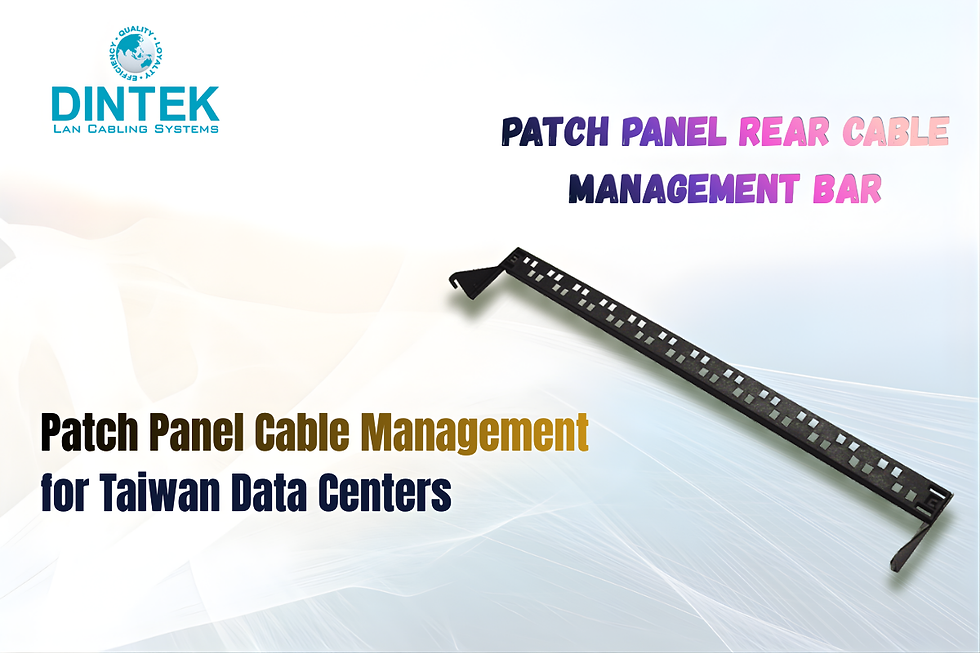The Ultimate Guide to Fiber Optic Cleaning Products
- dinteklancabling
- Sep 13, 2024
- 3 min read
Fiber optic networks are the backbone of today’s digital world, enabling high-speed data transmission over vast distances. However, even the most advanced fiber optic system can suffer from performance degradation due to dirty or contaminated connectors. This makes fiber optic cleaning an essential maintenance task. In this ultimate guide, we’ll explore the importance of fiber optic cleaning, the various cleaning products available, and best practices to keep your network running smoothly.

Types of Fiber Optic Cleaning Products
To keep your fiber optic connectors clean, DINTEK offers a range of cleaning products designed to meet various needs. Let’s look at some of the most common options:
Fiber Optic Cleaning Wipes
Fiber optic cleaning wipes are an essential tool for removing dirt, oil, and dust from connectors. These wipes are typically lint-free and pre-moistened with a solvent designed to break down contaminants without leaving any residue.
Best for: General cleaning of fiber connectors, especially for field technicians working in different environments.
How to Use: Gently wipe the connector end face in one direction, ensuring no contaminants are spread back onto the surface.
Cassette Cleaners
Cassette cleaners are compact devices designed to clean fiber optic connectors without the need for liquids. They use a reel of cleaning cloth, which is advanced after each use, ensuring a fresh section of the cloth is used for every cleaning.
Best for: Quick and repeated cleaning of connectors in both field and lab settings.
How to Use: Simply insert the connector into the cassette and rotate the wheel to clean the connector end face.
Fiber Optic Cleaning Pens (Click Cleaners)
Fiber optic cleaning pens, or click cleaners, are highly effective and easy to use. These tools are designed to clean the end faces of connectors inside adapters or hard-to-reach spaces.
Best for: Cleaning connectors in high-density patch panels or other tight spaces.
How to Use: Insert the pen into the adapter or connector and press the button. The pen’s internal mechanism will deliver a clean swipe across the end face.
Cleaning Swabs
Fiber optic cleaning swabs are designed to clean the inside of adapters, ports, or other areas where traditional wipes or pens may not reach. These swabs are typically lint-free and can be used with or without cleaning solvents.
Best for: Cleaning hard-to-reach areas and inside adapters.
How to Use: Insert the swab into the adapter or port, applying gentle pressure to clean the surface.
Best Practices for Fiber Optic Cleaning
Using the right cleaning products is only part of the equation. Following best practices ensures that your cleaning efforts are effective and that your fiber optic network remains in top condition.
Inspect Before Cleaning
Before cleaning, inspect the connector with a fiber microscope to determine whether cleaning is necessary. Cleaning too often can wear down the connector, so only clean when needed.
Use Appropriate Tools
Always use fiber-specific cleaning tools. Standard cleaning cloths or wipes can leave lint or scratches, damaging the connector. DINTEK’s range of Fiber Optic Cleaning Products is specially designed for the task.
Avoid Touching the End of the Face
Never touch the fiber end face with your fingers. Even clean hands can transfer oils and dirt, leading to contamination.
Use a One-Directional Cleaning Motion
Whether using wipes or pens, always clean in one direction to avoid recontaminating the surface.
Store Connectors Properly
After cleaning, ensure connectors are properly stored in protective caps or dust covers to prevent contamination.
Conclusion
Maintaining a clean fiber optic network is essential for ensuring optimal performance and long-term reliability. DINTEK comprehensive range of fiber optic cleaning products, including wipes, cassette cleaners, click cleaners, and swabs, offers the perfect solution for every cleaning scenario. By following best practices and using the right tools, you can ensure that your network remains efficient and free from costly signal degradation or equipment failure.



Comments